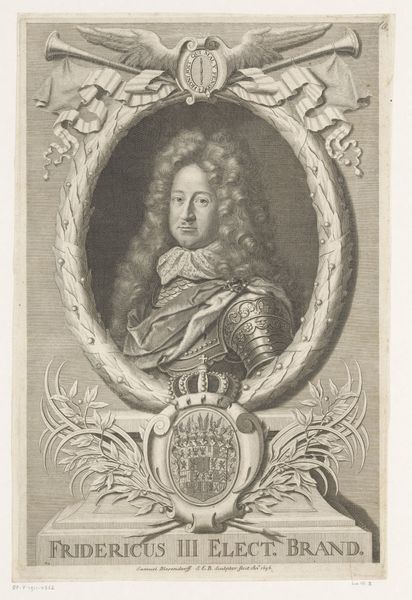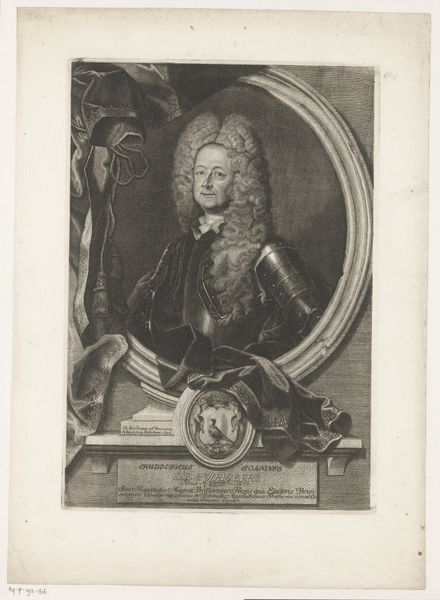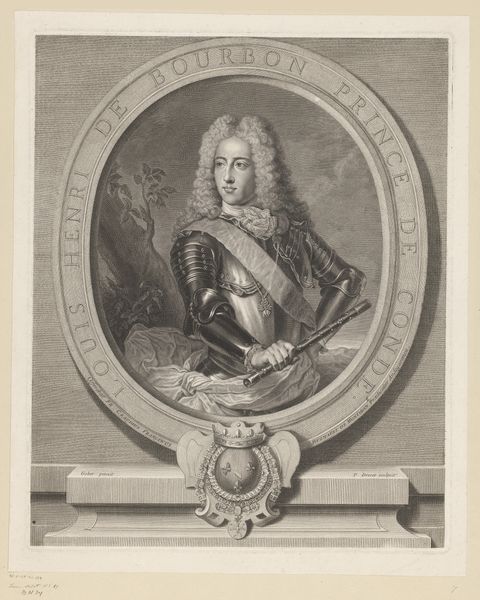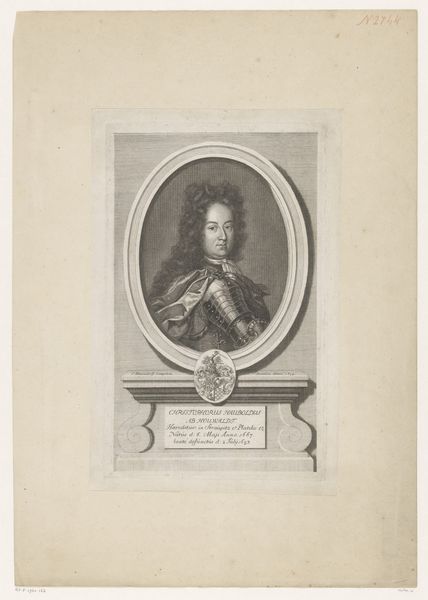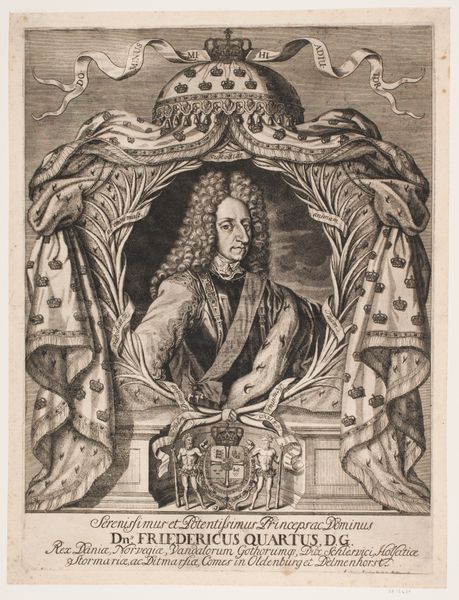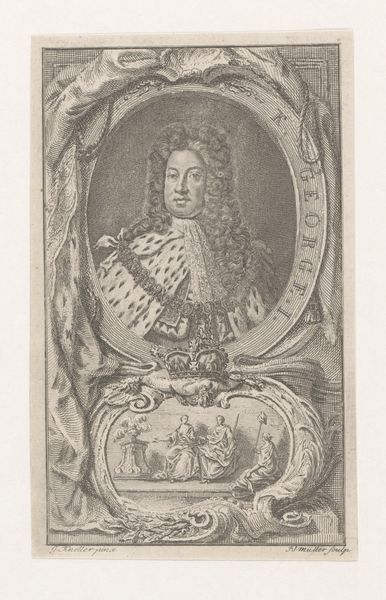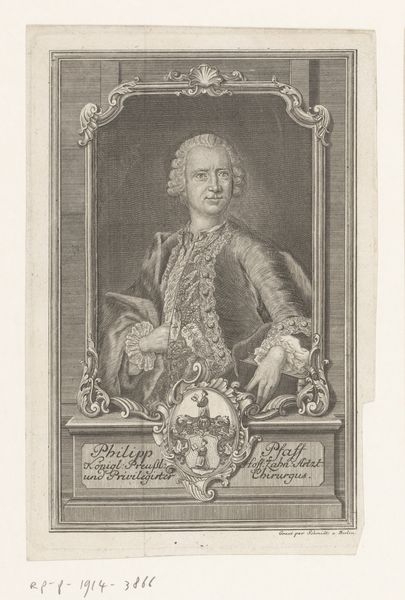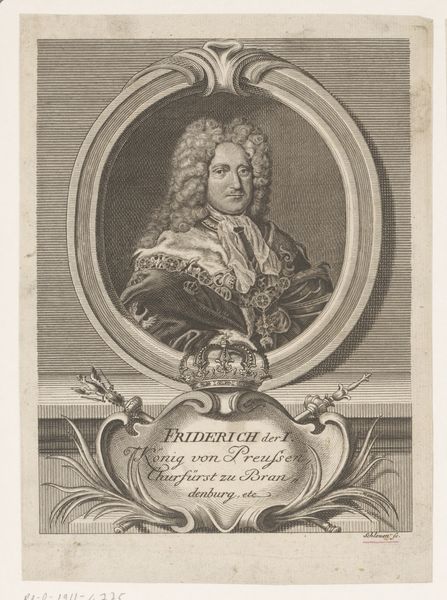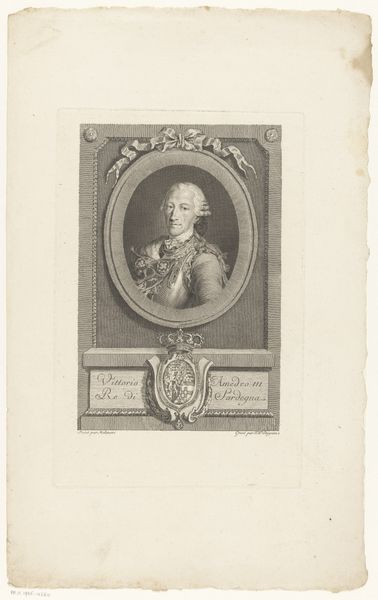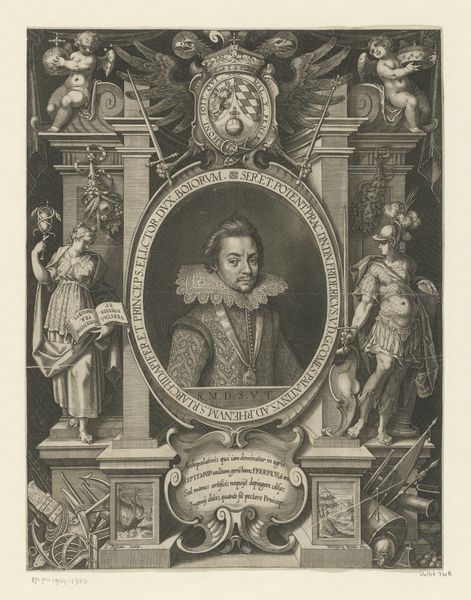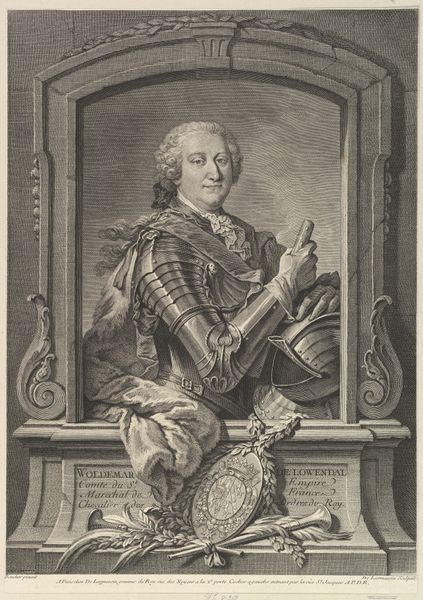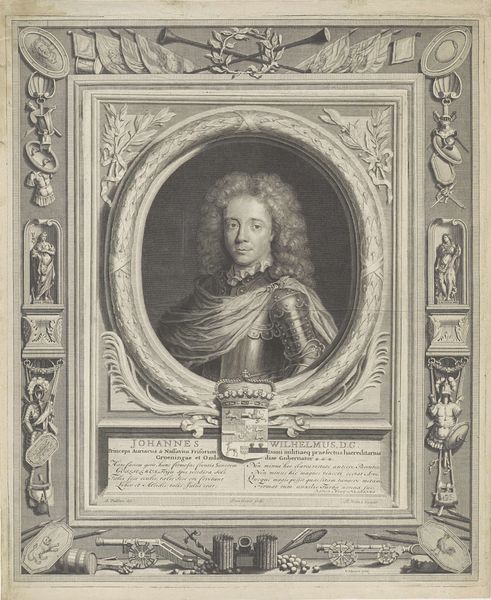
print, engraving
#
portrait
#
baroque
#
dutch-golden-age
# print
#
sculpture
#
old engraving style
#
charcoal art
#
history-painting
#
engraving
Dimensions: height 355 mm, width 277 mm, height 483 mm, width 403 mm
Copyright: Rijks Museum: Open Domain
Curator: Take a look at this print; it's titled "Portret van koning George I van Groot-Brittannië," or "Portrait of King George I of Great Britain." It's an engraving created sometime between 1714 and 1733, attributed to D. van der Swaen. Editor: What immediately grabs me is how rigidly performative the portrait feels. It's like a stage set more than an image of a person. Curator: In many ways, it *is* a stage. Portraits of monarchs at this time were less about individual likeness and more about conveying power, legitimacy, and lineage. See all the surrounding heraldry and symbolic objects? They're reinforcing the divine right of kings. Editor: Exactly. There are so many symbols packed in; my eyes keep jumping from one to another! The crown, scepter, coat-of-arms – all whispering the same thing: "I rule." And this isn't just any king; this is a King who rules *by right.* It's a Baroque power play. Curator: Think about what King George I represented in British history; as a German-born ruler who inherited the throne, his claim to it wasn't exactly airtight. A portrait like this served to shore up his position. Notice the elaborate frame and lettering surrounding the image itself. Even the text adds to the weight. Editor: Absolutely. And the choice of engraving as the medium is clever, isn't it? Engravings were reproducible; this image could be widely circulated. Talk about branding! It’s a controlled, carefully constructed performance made public. Curator: Very true. It highlights how portraits aren't merely records but potent political instruments. It asks us to question how images were – and still are – used to build and maintain power. It all makes me think what does it truly mean to reflect the identity of a ruler, then and now? Editor: Ultimately, images tell stories about what the person portrayed, or the institution, wishes us to believe about them – and about ourselves in relation to them. Seeing them gives us a chance to unravel that narrative. It can feel a bit overwhelming, even manipulative – so pay attention and reflect, look closely and draw your own conclusions!
Comments
No comments
Be the first to comment and join the conversation on the ultimate creative platform.
